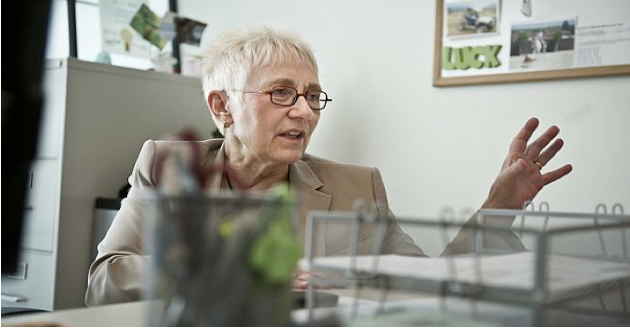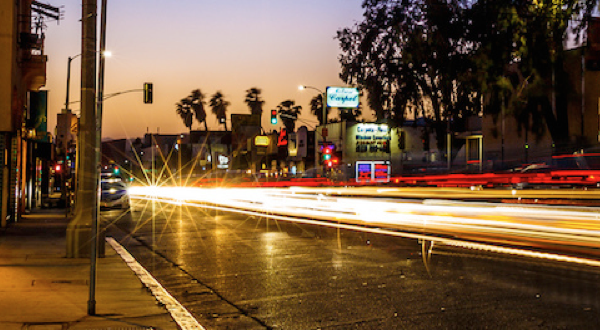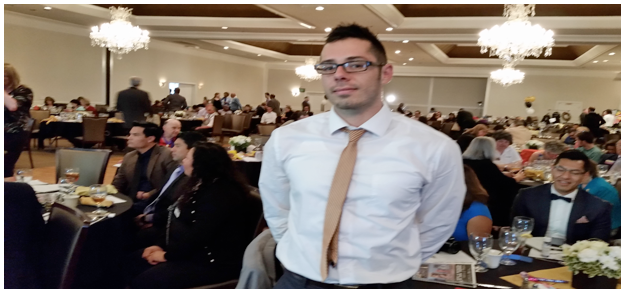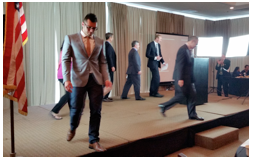Who’s In Charge at LA’s City Planning, the Queen of Hearts?
PLATKIN ON PLANNING--Queen of Hearts: Now... are you ready for your sentence? Alice: Sentence? But there has to be a verdict first... Queen of Hearts: Sentence first! Verdict afterwards. Alice: But that just isn't the way... Queen of Hearts: [shouting] All ways are...! Alice: ...your ways, your Majesty.
Just when you think that the broken planning process in Los Angeles is back on track, obviously pushed by the likely voter approval of the Neighborhood Integrity Initiative in March 2017, another foolish planning initiative sneaks up on you. Apparently oblivious to the April 2016 pronouncements from the Mayor and the City Council to begin an immediate and thorough update of the entire General Plan and Community Plans, on May 17 City Planning held a scoping meeting for the ”new” Hollywood Community Plan’s Draft Environmental Impact Report (DEIR) .
Never mind that there is no actual project for the DEIR to evaluate. And never mind that local plans should follow, not proceed, the updating of the mandatory and optional citywide General Plan elements. Like the Queen of Hearts in Lewis Carroll’s “Alice in Wonderland,” City Planning has decided to first prepare a DEIR to evaluate the future plan, then a detailed zoning ordinance to implement the future plan, then a new text to retroactively shape these implementation ordinances, and finally updates of the citywide General Plan elements in order to carefully guide each local Community Plan long after it has been prepared and presumably adopted.
This approach to City Planning would sit well with the Queen of Hearts, who decided on death sentences before she rendered verdicts! In City Planning’s case it is implementing a Community Plan Update before it has been prepared.
So, at least for CityWatch readers, let me describe how professional planners would and should proceed with the Update of the Hollywood Community Plan, as well as what should be considered in the environmental impact for this Update.
Correct sequencing is of paramount importance. Common sense, as well as professional planning standards, leads to an inevitable conclusion. You cannot update local plans until you have updated the required and optional citywide General Plan elements. At present, only two of Los Angeles’ mandatory citywide General Plan elements are up-to-date: Housing and Mobility (Transportation). Four other legally required elements are seriously out-of-date: Noise, Public Safety, Open Space, and Conservation. Still other optional but absolutely important elements are woefully out-of-date.
For example, the General Plan Framework Element, which ties all other citywide elements together, was prepared in the early 1990s, and it is based on 1990 U.S. census data. Its population forecasts for the year 2010 exceeded LA’s actual 2010 population by over 500,000 people. Other important elements, especially Infrastructure, Public Recreation, and Service Systems, date back to the 1960s. They are now a half-century old and, to say the least, ought to be updated before the grandchildren of the planners who drafted these documents are hired to implement them.
There are very compelling reasons for correct sequencing, for looking at Los Angeles as a whole before burrowing into fine-grained local planning and zoning. Only citywide General Plan elements can answer such obvious questions as:
- How much realistic population growth will LA actually experience – as opposed to the grandiose thinking of the Southern California Association of Government, real estate developers run wild, and their ever-faithful City Hall enthusiasts?
- If there is population growth in Los Angeles and adjacent areas, when and where will it appear?
- What user demands on local infrastructure and public services will result from this population growth?
- What is the existing and anticipated capacity of local public infrastructure and services in these areas based on the City of Los Angeles’ Capital Improvement Program and other public budgets?
- How will these infrastructure and services systems deteriorate over time, and what are reliable maintenance programs have been funded to keep them operational?
- Where in Los Angeles is there sufficient residential, commercial, and industrial zoning capacity for existing and future residents of all socio-economic strata?
- What environmental concerns, especially the mitigation of and adaptation to climate change, affect the nature and location of future public and private development?
- What esthetic considerations, especially the character and scale of existing neighborhoods, should be considered in local land use decisions for public and private investment?
To ignore the answers to these questions, and to just blindly up-zone and up-plan local private parcels, as is happening again in Hollywood, is the height of folly. It is the obvious path to ensure that LA’s legacy of shoddy city planning, toxic air, polluted water, pot-holed and rutted roads, cracked and uneven sidewalks, and record traffic congestion will only get worse.
The current approach also reveals the same hubris that blind-sided the City of Los Angeles with three lawsuits that in 2013 totally overturned the previous Hollywood Community Plan Update. In that case Superior Court Judge Alan Goodman threw out the entire Hollywood Plan, including the plan’s text, its Environmental Impact Report, and its lengthy ordinances to densify much of Hollywood through zone changes and general plan amendments. Judge Goodman’s decision also directed the City of Los Angeles to start anew, and it also resulted in the reinstatement of the even older 1988 Hollywood Community Plan.
Now, apparently dusting off these discredited planning documents, City Planning is undertaking a comprehensive environmental analysis on a “new” Update of the Hollywood Community Plan that does not even exist. City Planning’s website still features the plan text rejected by Judge Goodman four years ago. The only new documents are two tentative, indecipherable maps of proposed plan designations, proposed zones, and a 33-page ordinance matrix of these zone and plan changes. They are labeled, “Subject to change.” In other words, there is no actual project for the Draft Environmental Impact Report to evaluate and then compare to such alternatives as the existing 1988 plan, a downzoning plan reflecting Hollywood’s dwindling population, and the Alternative Hollywood Community Plan Update prepared by the East Hollywood Neighborhood Council.
Environmental Impact Report: Once the citywide General Plan elements are updated and once there is a detailed, carefully defined Community Plan Update for Hollywood, what questions should the Draft Environmental Impact Report carefully answer? This is my first cut at those categories:
- What do Hollywood’s residents want for their community over the next several decades?
- What is the capacity of local commercial, industrial, and residential zoning? More specifically, what is the projected population of Hollywood if existing residential zoning is built out to its full legal capacity, without any discretionary actions to boost density?
- What are the actual population trends in Hollywood, as opposed to notoriously inaccurate and inflated forecasts from the Southern California Association of Governments?
- How much existing residential, commercial, and industrial space has been lost in Hollywood through demolitions to clear building sites for new projects? In terms of residential, what were the cost factors for this lost housing? How will these trends be continued or slowed by the draft Update’s zone changes and plan amendments?
- What is the status of major infrastructure and service categories in Hollywood in terms of existing capacity, forecast capacity based on incremental degradation, secured funding for maintenance and repairs, and changes in user demand for infrastructure and services?
- To what extent does the existing plan, proposed plan, and the DEIR’s alternatives address adaptation to climate change and the mitigation of the Green House Gases responsible for global warming and climate change?
These questions are obviously a tiny part of what the eventual Draft EIR will investigate, but these are all important categories that were hardly considered in the 1988 plan restored by the Los Angeles County Superior Court, as well as in the 2012 Hollywood Update rejected by the same Court.
(Dick Platkin is a former Los Angeles city planner who reports on local planning issues for CityWatch. He welcomes questions, comments, and corrections at rhplatkin@gmail.com.)






 Vasquez competed with four other contestants, representing other Divisions in Toastmasters District 52. The winner will go to Washington DC in mid-August to the Toastmasters International Speech Contest, where this year’s World Champion will be recognized.
Vasquez competed with four other contestants, representing other Divisions in Toastmasters District 52. The winner will go to Washington DC in mid-August to the Toastmasters International Speech Contest, where this year’s World Champion will be recognized. 




